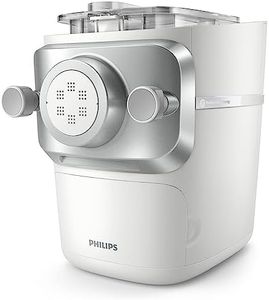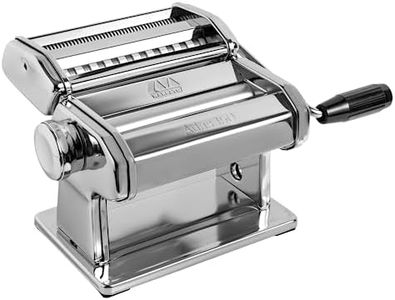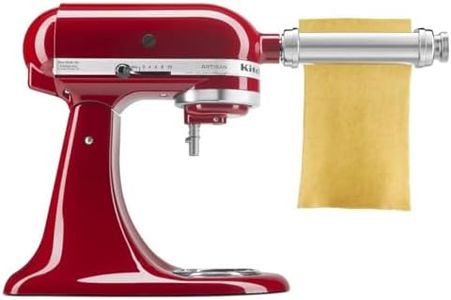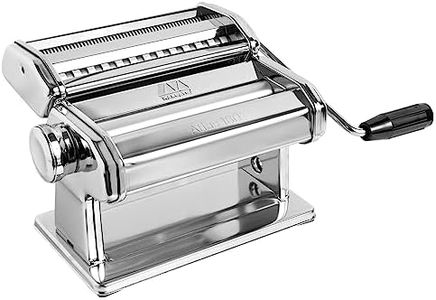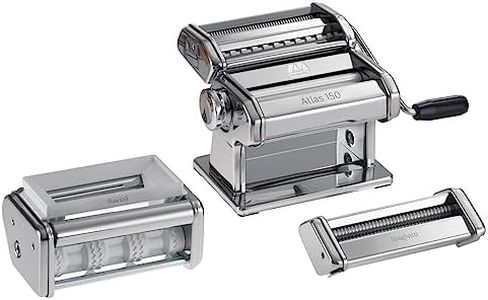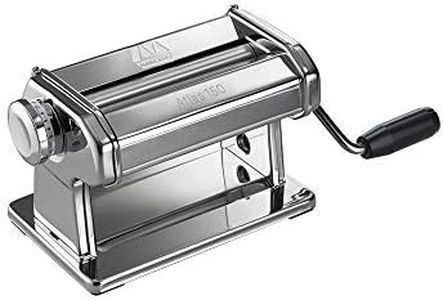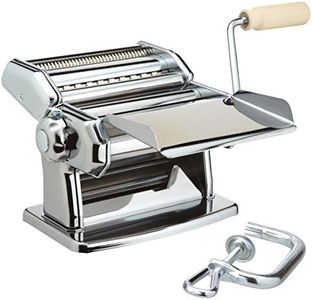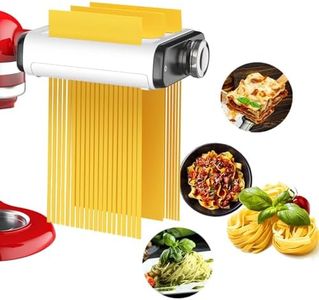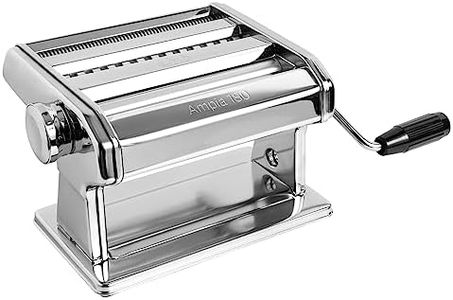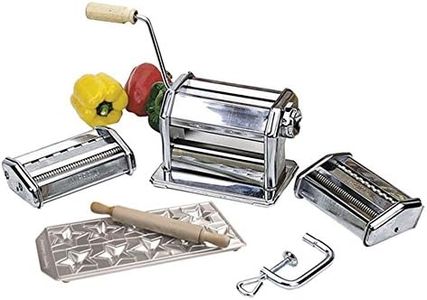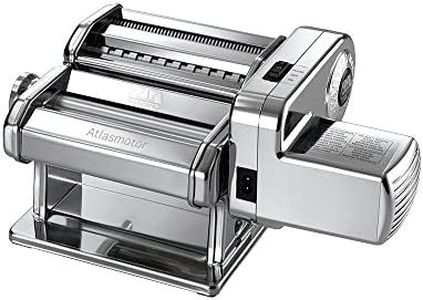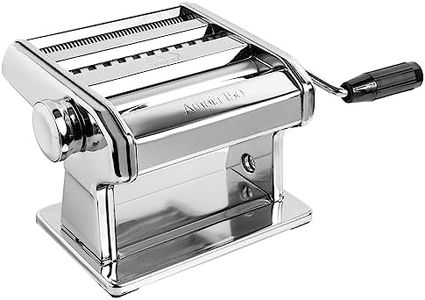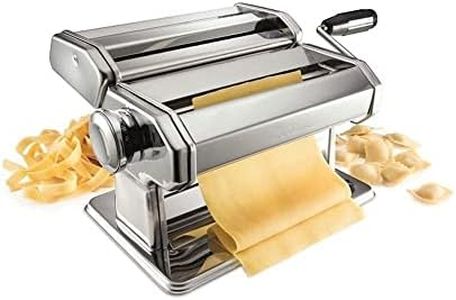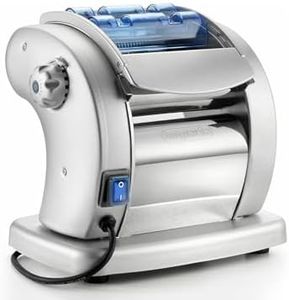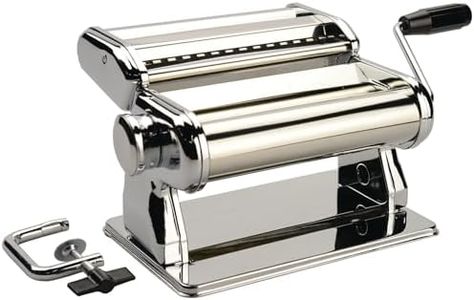We Use CookiesWe use cookies to enhance the security, performance,
functionality and for analytical and promotional activities. By continuing to browse this site you
are agreeing to our privacy policy
10 Best Pasta Machines
From leading brands and best sellers available on the web.Buying Guide for the Best Pasta Machines
Choosing a pasta machine can feel overwhelming at first, but focusing on how and how often you plan to make pasta will help narrow down your options. Whether you're a beginner wanting to try fresh pasta occasionally or a seasoned home chef looking for perfect strands every week, the right machine can make the process easier and more enjoyable. It's important to think about the kind of pasta you want to make, how much effort you want to put in, and how easy you want cleaning and storage to be.Type (Manual vs Electric)This refers to how the pasta machine operates. Manual machines are operated by turning a hand crank while electric models use a motor. Manual machines are usually simpler, more affordable, and give you a hands-on experience, but require more effort. Electric machines do most of the work for you and are faster, which is great for making larger batches or for people with limited hand strength. If you value tradition and want more control, go manual; if convenience and speed matter more, look at electric options.
Pasta Types and AttachmentsSome pasta machines come with attachments to make different shapes and types of pasta, like fettuccine, spaghetti, or even ravioli. Basic machines might only roll sheets, while others offer multiple cutters and accessories. Decide if you mainly want to make one type of pasta or if you’d like the freedom to try various styles; this helps you determine how many attachments or compatible accessories you’ll want.
Roller and Cutter MaterialThis refers to what the important parts of the machine are made from, usually stainless steel or chrome-plated steel. Stainless steel is more resistant to corrosion and easier to clean, making it more durable. Cheaper materials may rust or wear out faster. For long-term use and less maintenance, go for all-stainless steel parts, especially if you’ll use the machine often or wash it frequently.
Thickness SettingsThickness settings determine how thick or thin you can roll your pasta dough. Most machines offer several levels, usually adjusted by a knob. Fewer settings limit your versatility, while more options let you achieve anything from delicate angel hair to thick lasagna sheets. If you want to experiment with recipes or precision matters to you, look for a machine with a wide range of thickness adjustments.
Cleaning and MaintenanceThis is about how easy the machine is to clean and maintain. Pasta machines can trap flour and dough in small spaces, so models designed for easy disassembly or with fewer crevices are simpler to clean. Some are 'wipe-clean only' while others might have dishwasher-safe parts, though many experts recommend hand cleaning. If you dislike cleaning or will use your machine often, pick a model known for easy maintenance.
Build Quality and StabilityBuild quality refers to the strength and sturdiness of the machine. Heavier machines tend to stay more stable during use, reducing wobble and making cranking or pressing easier. Look for machines with solid construction, smooth operation, and strong clamps that secure it to your countertop. If you plan to make large batches or thick dough, good stability and build quality are especially important.
